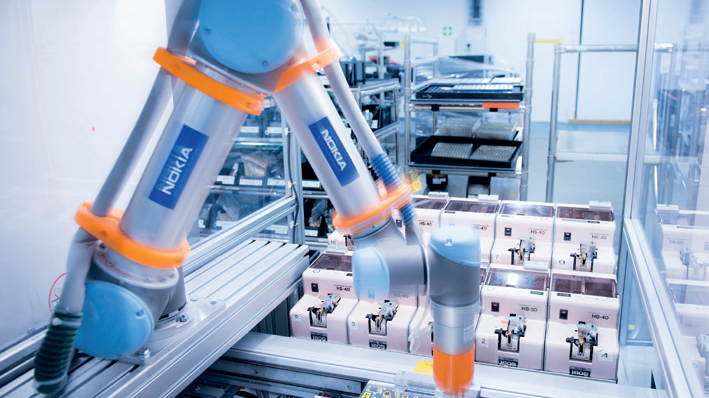
OT, meet ICT
Just before the pandemic broke last year, independent analyst firm ABI Research surveyed more than 600 manufacturing decision-makers from nine major markets to assess their technology investment strategies related to Industrial IoT (IIoT) and Industry 4.0.
The research looked at near-term drivers influencing industrial systems buying decisions across IT (information technology) and OT (operations technology). It found that IT drivers primarily focused on reducing downtime (53 percent), improving operations efficiency (42 percent), and enhancing security (36 percent). In comparison, OT drivers reflected a desire to replace aging infrastructure (43 percent), improve efficiency (40 percent) and increase capacity (38 percent).
And while these differing priorities do not indicate an irreversible split between ICT and OT priorities, it does highlight that these technology bedfellows are coming at IIoT adoption and Industry 4.0 from somewhat different directions.
Mind the gap
Much has already been written about the potential of IIoT and Industry 4.0 to create smart factories and transform manufacturing. A combination of smart sensors and devices will enhance manufacturing and industrial processes, with machines becoming ‘smart’ as they feed data between one another to make decisions in real time. The result will be safer, more productive and efficient manufacturing processes carried out at lower cost.
To achieve this outcome, existing OT processes and hardware — including production equipment, industrial robots, sensor instrumentation and control technology — need integrating with IT infrastructure, which might include networking, storage, computing hardware and cloud-based applications.
As a result, smart factories are characterized by ultra-modern scenarios of shining, clean, seamless operations in high-tech environments — envisioning a situation that is some way from much of today’s manufacturing shop-floor reality. And therein lies one reason behind the cultural ‘gap’ between ICT and OT. ICT is traditionally perceived as air-conditioned data centers or darkened rooms with racks of servers. All very slick and high tech. OT, on the other hand, is where the ‘real work’ of manufacturing gets done. Instead of a sleek IT environment, OT is characterized by a more uncompromising, production-floor setting. OT being the pragmatic blue-collar workhorse to ICT’s sophisticated artisan.
In addition, respective technology landscapes differ. ICT has embraced the openness of cloud computing, edge infrastructure and as-a-service delivery, based on star topology IP data networks, with security at the perimeter.
OT, however, has tended to use machine control and industry-proven platforms which — while not the latest available — have proved their worth based on performance and reliability for the task in hand. And OT networking? That’s primarily based on Ethernet-based ring topology with a closed-door approach to security. Legacy, factory floor OT domains being self-contained with external connectivity to other operational areas via firewalls.
A further divergence between OT and ICT is organizational reporting. While ICT has long been the domain of the CIO or CTO, OT reports up into the Engineering and Operations functions. It seems unthinkable that coordination between the two may happen infrequently and only at senior management level.
5G – potential match maker?
And, while this relationship may show signs of being disconnected, there is hope yet for a happy union. As ongoing 5G standard releases 16 and 17 come on-stream, as well as subsequent releases with industrial add-ons, there is simply too much potential to explore based on OT/ICT integration, with promise of exciting new manufacturing capabilities.
For example, 5G Ultra-Reliable Low-Latency Communications (URLLC) capabilities combined the benefits of mobility and flexibility, along with the performance of wired LAN connectivity. This is critical to delivering productivity-boosting IIoT scenarios, such as factory automation. URLLC enables ‘six nines’ level of reliability, providing the standards required for smart factory automation and control operations.
In addition, 5G private wireless networking using millimeter wave will see enhanced location capabilities that enable precise positioning down to the centimeter level, which opens up a range of new business and delivery models. Overall, factory automation including mobile robots and human–machine interfaces as well as plant asset tracking and management becomes much more of a reality as 5G matures.
These releases will also bring a new Time-Sensitive Communication capability that provides deterministic 5G wireless performance to support industrial protocol connectivity — providing an important bridge that helps integrate ICT and OT technologies.
Industry Level Integration
To be truly 5G ready, companies will not just have any 5G network infrastructure, but one that enables the effective ICT and industrial OT integration. In order to help facilitate closer ICT and OT integration in readiness for 5G, the 5G-ACIA (5G Alliance for Connected Industries and Automation) provides a central, global forum for addressing and evaluating relevant technical, regulatory and business aspects relating to 5G in the industrial domain.
With a membership of more than 80 companies across industries, educational and research institutions with a stake in OT, its mission is quite straightforward: to teach one other. Based on an approach that combines consensus with technical contribution, there’s a clear recognition of the need for dialogue between operational technology, manufacturing companies and networking IT companies.
Of course, there is potential friction between OT and ICT to be overcome, with each owning — and protecting — its own area of domain expertise. But there is an also increasing volume of industry advice and guidance on how to affect a successful relationship between the two increasingly interdependent functions.
These center on collective buy-in from stakeholders in all disciplines and at all levels in the organization, having clear objectives and managing related risk as well as addressing cultural challenges and establishing clear governance for technical and organizational integration.
Whichever path and methodology companies choose to address this essential cultural integration, it’s inescapable that successful digital transformation relies on a complex process of technology integration. In this case, the Cost of Inaction may prove terminal to a manufacturer — either through lost productivity, or reduced competitiveness. It is simply too big an opportunity for the relationship to fail. So, ICT/OT — make up or break up.
 Tom Richter
Tom Richter
Tom Richter is Global Head of Discrete & Process Manufacturing Verticals for Nokia Enterprise Sales. In his role, he is responsible for the design and specification of tailored network solutions based on customers’ requirements.
Nokia creates technology that helps the world act together. As a trusted partner for critical networks, it is committed to innovation and technology leadership across mobile, fixed and cloud networks. It creates value with intellectual property and long-term research, led by the award-winning Nokia Bell Labs. Adhering to the highest standards of integrity and security, it helps build the capabilities needed for a more productive, sustainable and inclusive world.
www.nokia.com/networks/industries/